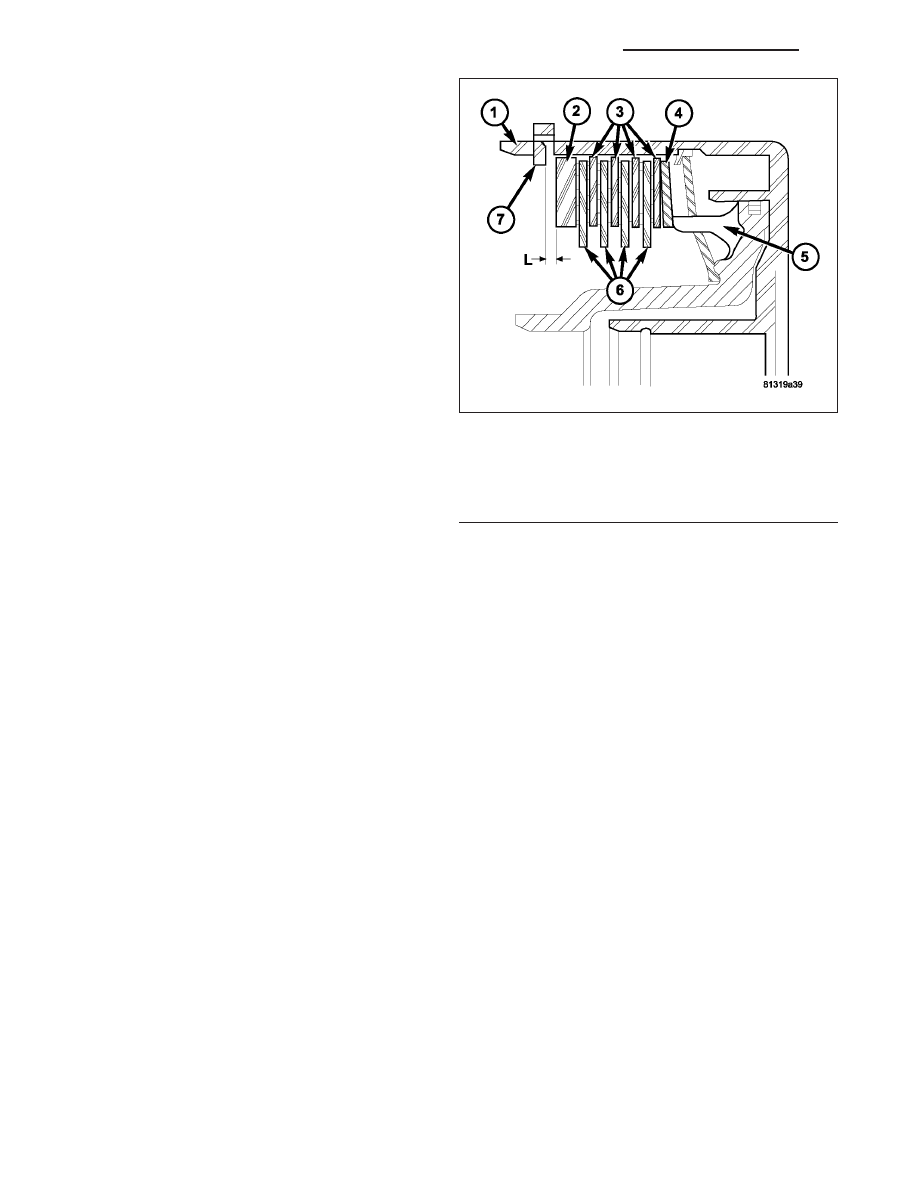Content .. 1494 1495 1496 1497 ..
Jeep Grand Cherokee WK. Manual - part 1496

13. For transmissions using single sided friction discs,
use a feeler gauge to determine the play
9
L
9
at
three points between the snap-ring (7) and outer
multiple-disc (2).
14. During the measurement the snap-ring (7) must
contact the upper bearing surface of the groove in
the outer multiple-disc carrier.
15. The correct clutch clearance for transmissions
with single sided friction discs is 2.3-2.7 mm
(0.091-0.106 in.) for six friction disc versions, 2.4-
2.8 mm (0.095-0.110 in.) for eight disc versions,
and 2.5-2.9 mm (0.099-0.114 in.) for ten disc ver-
sions.
16. Adjust with snap-ring (7), if necessary. Snap-rings
are available in thicknesses of 2.0 mm (0.079 in.),
2.3 mm (0.091 in.), 2.6 mm (0.102 in.), 2.9 mm
(0.114 in.), 3.2 mm (0.126 in.), and 3.5 mm (0.138
in.).
1 - OUTER DISC CARRIER
2 - OUTER MULTIPLE DISC - 4.0 MM (0.158 IN.)
3 - OUTER MULTIPLE DISCS
4 - DISC SPRING
5 - PISTON
6 - INNER MULTIPLE DISCS
7 - SNAP-RING
21 - 794
AUTOMATIC TRANSMISSION - NAG1 - SERVICE INFORMATION
WK